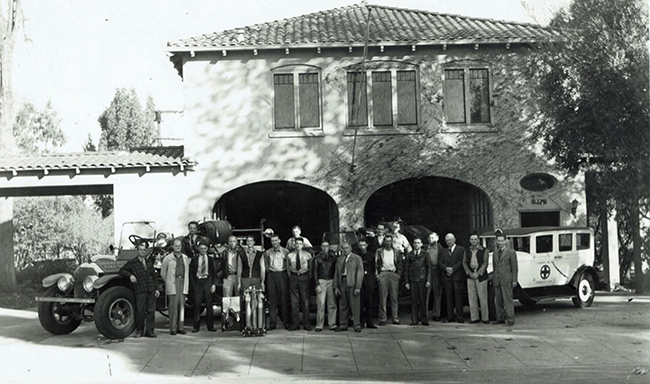Sidewalk CPR training hits streets of Claremont
Pomona Valley Hospital Medical Center took emergency education to the streets of Claremont on Thursday for Sidewalk CPR, teaching locals techniques associated with a modified hands-only CPR procedure.
The Village demonstration, which took place in front of the Claremont Chamber of Commerce, was one of several across the region recognizing National CPR Day. Emergency Medical Services and the American Heart Association partnered with Pomona Valley Hospital to help bring awareness to a newly approved set of CPR guidelines.
Laurie Sepke, Pomona Valley’s pre-hospital care coordinator for emergency services, hopes teaching a more user-friendly version of CPR will encourage hesitant members of the public to apply the techniques in emergency situations.
“Only 30 percent of people in an emergency situation will perform CPR,” Ms. Sepke said. “Most people are afraid to approach a person in need of help because they are afraid of mouth-to-mouth. They don’t have to be afraid anymore.”
Since Cardiopulmonary Resuscitation (CPR) was first demonstrated in 1957, emergency responders have preached its “ABCs”: Airway, Breathing and Compressions. Create an airway, perform mouth-to-mouth to help breathing and perform chest compressions. However, recent studies have shown many people are afraid to perform CPR because of sanitary concerns relating to mouth-to-mouth resuscitation. Although research shows chest compressions alone can help make a dramatic difference, people are less likely to help.
“It brings critical blood to the heart and brain,” Ms. Sepke explained.
As a result, hands-only CPR without the use of mouth-to-mouth was adopted as the standard guideline in 2011. The first step is to check for responsiveness—shake the person and shout. Next, check for breathing. If the person is not breathing, gasping or turning blue, immediately shout for someone to call 911, or if no one is nearby, call 911.
Next, place the heel of one hand on the center of the chest between the breasts and interlock the fingers. Compress about 2 inches straight down hard and fast. As a humorous yet potentially lifesaving rule of thumb, the nurses suggested compressing to the beat of disco favorite “Staying Alive.” Continue until a medical responder arrives or as long as possible, suggested Pomona Valley Registered Nurse Ann Mendoza.
“Just keep the heart pumping. That is most important to the survival rate of a patient,” Ms. Mendoza said.
Pomona Valley personnel and other emergency responders were on hand with dummies throughout the day to teach compressions and other emergency techniques. Though San Dimas resident Donna Lwin is already CPR certified, she was eager to take a moment between checking her bank account to update her emergency response knowledge.
“It’s important to learn these techniques to help become a more productive citizen. We have to take care of our own,” said Ms. Lwin, who is pleased with the modified hands-only method. “It will help more people get involved who would have otherwise been apprehensive.”
Ms. Lwin’s daughter, Emma Lwin, admitted she would not have been comfortable performing CPR under the former resuscitation guidelines.
“Not unless it was to save a family member or something,” said Emma, who learned CPR techniques for the first time on Thursday.
Though Thursday’s event was merely an information session, personnel hope bringing awareness to the modified method will incite more people to seek out CPR certification. It can make all the difference, according to Ms. Sepke.
“The first 5 minutes are absolutely paramount and can really help save someone’s life,” she said. “Anything is better than doing nothing.”
For those unable to attend the event, an instructional CPR video can be viewed at www.heart.org/handsonlycpr. Those interested in becoming certified in CPR can contact Pomona Valley’s Education and Resource Center at 865-9782 or visit the American Heart Association at www.heart.org.
—Beth Hartnett
news@claremont-courier.com










0 Comments